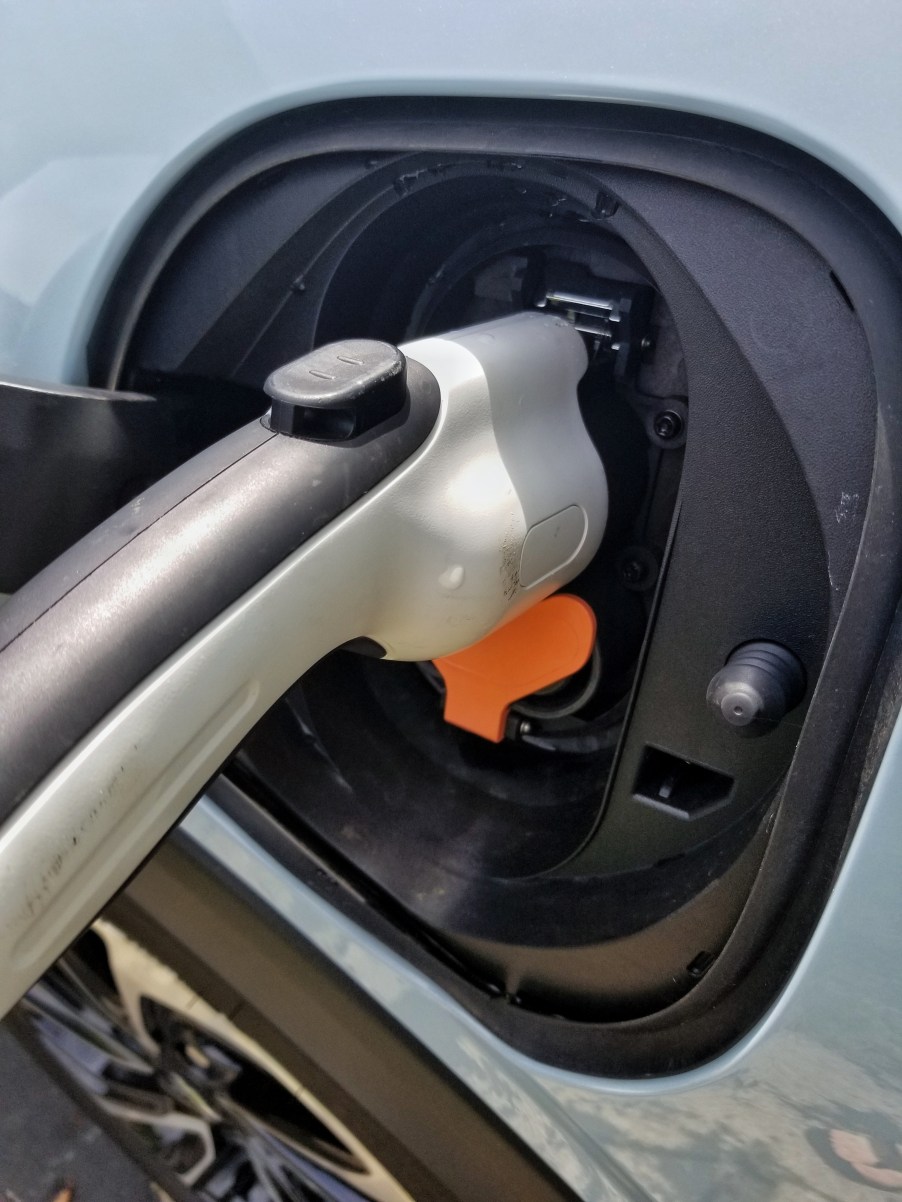
Can You Charge an EV During a Thunderstorm?
Charging an EV during a thunderstorm article highlights:
- You can safely charge an EV in the rain, including at home if you have a waterproof outlet
- External home outlets add even more protection to charging an EV during a lightning storm
- I safely charged a 2022 Chevrolet Bolt EUV in a thunderstorm with no damage to the EV or my house
Thunderbolts and lightning are very, very frightening in any car, but what about when you’re charging an electric one? It’s a valid EV concern, especially for those who’ve never owned one. And if you’re charging your EV at home, particularly if, like me, you can only do it outside. But after charging a 2022 Chevrolet Bolt EUV at my house outside in a thunderstorm, I found these EV worries more groundless than I initially feared.
Charging an EV in the rain, even at home, is safer than you think


You don’t need to be a physicist to know that electricity and water don’t mix. And considering how much power EVs pack into their batteries, having any water get in there would be, to put lightly, bad. But like virtually everything else about modern cars, automakers have thought of that.
If you own a smartphone, scooter, unicycle, or another electrical device, you’re likely familiar with IP (Ingress Protection) ratings. Each is a two-digit number that describes how well the device keeps certain materials out of sensitive internal areas. The first digit, which goes from 1-6, rates the protection against small foreign objects, e.g., dirt and sand. And the second, which goes from 1-8, measures liquid protection.
Although not every automaker lists their electric vehicles’ IP ratings, most earn an IP 66 or 67, Autotrader says. To put that in perspective, a submarine would earn an 8. In other words, sand ain’t getting in, and neither is a bit of rain. And that doesn’t just apply to EV batteries and motors, but their charging ports, too.
For proof, look at the photo above. It shows my 2022 Chevrolet Bolt EUV tester’s charging port after a night of rain with the charger plugged in the entire time. Apart from a few drops, the port’s dry. Plus, while the owner’s manual warns you not to leave the charge cord where it could be submerged in water, it doesn’t say anything about rain. It was under a bush the entire night and worked fine the next day.
In addition, even if some water did get in, there are layers of protection built into EV charging equipment. I’m talking sensors that check if your charging cable is firmly connected, software that monitors power flow, and emergency shut-down components. These systems are why it’s safe to sit in your EV while it charges, including when it’s raining.
Furthermore, external power outlets have watertight covers. That doesn’t mean you can or should run an extension cord to one for charging your EV. However, plugging directly into the outlet, as I did with the Bolt EUV, is fine.
What happens if lightning strikes an EV that’s charging?
Rain, though, isn’t the only thing that comes in a thunderstorm. Fortunately, EVs aren’t any more dangerous to drive in a lightning-filled storm than gas-powered cars. In the extremely unlikely scenario that lightning did strike an electric car on the road, the metal body would direct it into the ground. It might blow out a tire or fry some wiring, the National Weather Service says. You’d be fine, though, and overall, so would the car.
But what about lightning hitting an EV as it’s charging? Or a bolt striking part of a charging station? At first glance, that sounds like a recipe for disaster, especially given how EV battery fires can go. However, it’s not that simple.
Firstly, as noted earlier, EVs have built-in protection for their batteries, motors, and charging components. Admittedly, a direct lightning strike could still overwhelm them. But again, that’s a rare occurrence. And if a power surge traveled to the EV through the charging cable from your home or a charging station, the protection systems would act like big fuses. They’d blow, saving you and the rest of the car. Plus, charging stations have protective measures, too.
Secondly, if you’re charging your EV at home through an external outlet, as I was, you have an extra layer of protection. The National Electrical Code requires all external outlets to be ground fault circuit interrupters (GFCIs). Essentially, they have built-in fuses that trip the second there’s a short circuit or power surge. So, even if your EV was struck by lightning during a thunderstorm while charging, the GFCI would prevent any surge-related damage.
Still, that’s all in theory. I wanted to test it for real.
Here’s what it’s like to charge an electric car at home outside during a thunderstorm


Even with this knowledge, I was nervous about leaving an EV that didn’t belong to me charging as a thunderstorm rolled in. But because I also needed to know the answer, I plugged the 2022 Bolt EUV into the outlet using its provided cable. And I waited as rain fell and lightning occasionally flickered over Chicagoland.
The power went out briefly during the night, but it came on shortly after. Other than that, though, the charging was…uneventful. The only sign that anything was wrong was the Bolt’s digital gauge cluster telling me its charging was interrupted. And the charge cable hardware was undamaged after its summer shower.
Would I do this again? If it was monsoon-level rain, probably not, due to that standing-water warning. Otherwise, though, I’d be totally fine with charging an EV in a thunderstorm.
Follow more updates from MotorBiscuit on our Facebook page.


